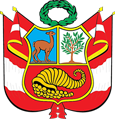Iquitos Refinery
History
In the 1950s, the world required the derivates of crude oil in order to boost an accelerated industrialization process that cured the wounds caused by World War Two. Oil-producing countries – Peru among them – found themselves needing to modernize their facilities in order to serve more efficiently both national and international demands for Hydrocarbons.
In that context, on October 27, 1955 the Luis F. Dias Refinery, located in the province of Maynas, in Loreto, launched into operation. Since then, the market in the Peruvian orient grew so much that, in 1982, the new Iquitos Refinery started operating, with the capacity to processing ten times more crude than the old complex.
The Iquitos Refinery is located on the left branch of the Amazon River, 14 kilometers away from the city of Iquitos, capital of the province of Maynas, in the department of Loreto.
As it is located in the capital of the Peruvian Amazon, this refinery operates in harmony with nature and with respect to both, the native communities and the local population. Also, its fuel production drives the development of the region and supplies difficult-to-access places of the forest, which satisfies the demand of fuel of the vehicle fleet, river transport and the industry.
With a processing capacity of 12,000 barrels of crude oil per day, it covers the fuel demand of the departments of Loreto, San Martin and part of Ucayali. When needed, it has also served frontier populations such as Leticia (Colombia) and Tabatinga (Brasil).
Equipped with cutting-edge technology and a strict safety control, the Iquitos Refinery is a symbol of efficient, competitive and dynamic management.
Industrial complex
The storage capacity of the Iquitos Refinery is 553,200 barrels per day. It holds advanced technology infrastructure such as the Primary Distillation Unit (with a capacity of 12,000 barrels per day), the Gasoline Treatment Unit (3,000 barrels per day) and the Turbo A1 Treatment Unit (1,000 barrels per day).
Likewise, it has pontoon-style docks to unload crudes, cracked naphtha and biodiesel, as well as to load liquid fuels in bulk that are traded in the Amazon region from the Yurimaguas and Pucallpa sales plants. It also has a liquid pipeline to transfer fuels from the refinery to the Iquitos Sales Plant.

